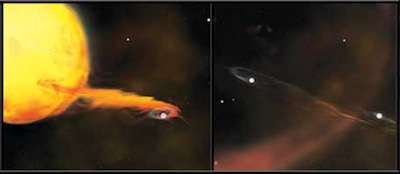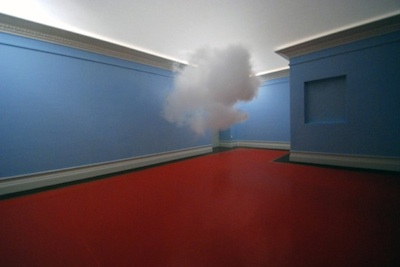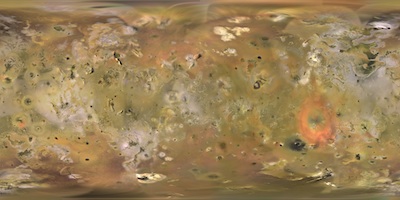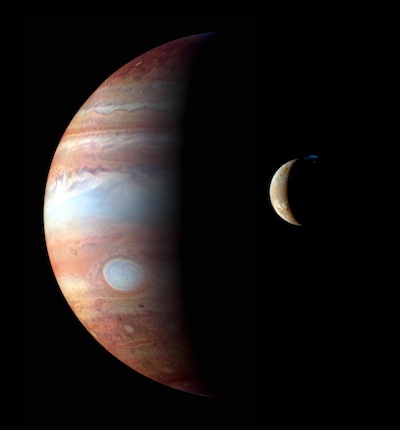 Hello and welcome back to another exciting (and long overdue) edition of Science Saturday! This week: hear Microsoft’s real-life universal translator, map out the volcanic moon Io, feel the heat from increased solar activity, and make stars blow up with the help of NASA. All this and more, plus our gadget of the week: the indoor cloud machine.
Hello and welcome back to another exciting (and long overdue) edition of Science Saturday! This week: hear Microsoft’s real-life universal translator, map out the volcanic moon Io, feel the heat from increased solar activity, and make stars blow up with the help of NASA. All this and more, plus our gadget of the week: the indoor cloud machine.
Microsoft Developing a Universal Translator
It’s one Star Trek technology, likely written in part to save the writers from having to invent a new language every time we meet a new alien species, that just seems like magic. To be able to speak in one language and have the others in a room hear your voice, but in a different language. Could that technology ever actually exist? Microsoft wants to make it real and is now developing just that — software that translates YOUR voice (not a computer reading a translation of your voice; it’s actually your voice!) into other languages on the fly. The system needs about an hour of training listening to your voice, then uses individual sounds recorded from the training session to create your voice in a foreign language. The tech was showcased at a Microsoft campus earlier this month.
More at Technology Review.

Real life Universal Translator from Microsoft in the works
New, Best Ever Map of Jupiter’s Volcano Moon Io
Io is the veritable volcanic planetary body as the most volcanically active body in the solar system — it’s literally a planetary volcanologist’s dream (no, strictly speaking, there’s not actually such a thing as s planetary volcanologist… yet!). This little moon is gravitationally jammed between the second largest gravity well in the solar system (after the sun), Jupiter, and the other large Galilean moons of Jupiter creating a gravitational tug-of-war that causes so much friction and heat inside little Io that it is constantly resurfacing itself volcanically; Io is literally turning itself inside out over and over again. Now, we have the first global map of Io published by the US Geological Survey, which gives scientists a full picture of the volcanic moon.
Bonus! Awesome (stitched) image of Io and Jupiter!
This (these) gorgeous picture(s) of Jupiter and Io were taken in 2007 when the New Horizons probe swooped past Jupiter on its way to Pluto. The red dot on Io is an active volcano, and the blue plume is a volcanic eruption! The photo is real in that it is real images taken at Jupiter, but it is stitched together (the photo of Io was taken a day or so after the photo of Jupiter). I’ll let Phil Plait (aka Bad Astronomer) explain more on his blog.
Solar Storms Dumping Gigawatts of Energy into Earth’s Atmosphere
One exciting area of science news as of late is space weather. Our sun has just come out of a solar minimum — where activity on the giant plasma ball is slim to none. Now, Sol is churning out coronal mass ejections and solar flares like nobody’s business — and the energy from those events is coming straight at Earth. Luckily, our atmosphere shields us from the worst of it. Still, this is the first time we’ve had lots of advanced technology in orbit to study (and be affected by) a solar maximum, which will peak in 2013. NASA is doing all it can to determine what effects we might see here on Earth’s surface from continued solar activity in the coming years.
NASA: How to Make a Star Go Supernova
Thanks to new data and studies from NASA’s Swift satellite, scientists are figuring out how to blow up stars. More specifically, they are trying to determine the origins of Type 1a supernovae. The current thinking is that a white dwarf star orbits a normal star, pulling a stream of matter from it, until the white dwarf reaches critical mass and explodes catastrophically. But, there are still unanswered questions as to what kinds of stars reside in these binary systems. The secondary star may be a red or blue supergiant or even a second white dwarf star. In the latter model, the two white dwarfs would spiral inward and collide, creating the supernova. Astrophysicists are working with new data and creating models for what could possibly be happening in these super explosions in space.
More at NASA.gov.

Two possible scenarios. Left: White dwarf & sun-like star. Right: Two white dwarf stars
Video of the Week: Symphony of Science: Dinosaurs!!
We absolutely love Symphony of Science, taking famous scientists, beautiful pictures, and creating music videos. Check out their latest video: Dinosaurs!
Gadget of the Week: Indoor Cloud Machine
In a new art installation by Dutch artist Berndnaut Smilde, clouds — real clouds — are created in the middle of a gallery space. Using a fog machine and very precise controls on the temperature and humidity of the room, Smilde creates puffy white clouds floating in interesting spaces.


Real clouds created as art by science
Science Bytes: Mercury
Not enough science for you? Here’s a warp-speed look at some more science tid-bits that are worth a peek.
This week, all eyes are on planet Mercury with new data streaming in from the MESSENGER mission, currently in orbit around the solar systems 1st planet.
- MESSENGER provides new look at Mercury’s landscape, metallic core, and polar shadows
- Mercury having an exciting, active middle age
- NASA extends missions to Mercury and the Moon



Wow. Those views of Io (especially the pairing of Io and Jupiter) were spectacular! As for the map, it’s unfortunate that with Io constantly resurfacing, the map will only be accurate for a short while. But nevertheless, it’s pretty cool….
OK on to seriousness. That cloud thing looks kinda cool. Wonder if we could figure out a way to collect all that energy and pipe it back planet side.
Welcome back Science Saturday!!
Great to se science Saturday!. Love reading this. Poor Io. Just can’t catch a break. I wonder if they can get that little cloud to rain. Lol.
Thank you for bringing back Science Saturday. It was greatly missed.
Cloud Machine + Trek =
Alien Iron Blood Cloud Monster!!! From TOS Obsession!!!
What’s really funny is that the guy who made the universal translator software a guy named Soong. LOL
YAY!!! Very happy to hop in and see this. Thanks Anthony for bringing it back and Kayla for the article!
I have missed this feature!!
Welcome back and thanks!
The universal translator guy is named Frank Soong! How about that! I’ve always thought “Soong” was a made up name until this point!
Welcome back, Kayla! I missed you.
Now it would be awesome if you brought back the Sci-fi movies/TV features! That was a great way for me to keep up what’s happening in the world of sci-fi/fantasy movies and TV without having to check 3-4 sites!
I agree wholeheartedly with number 12. I love the science Saturday articles as well. This kind of content along with the trek news is what made me love this site years ago. Please keep it coming!
@1: How fast is the process, though? Is it fast geologically speaking (“only” a few hundred thousand years or so for Io to resurface itself), or something that humans could actually see happening with the naked eye?
Great to see Science on Saturday back
Great stuff, thank you!
T.’.
Thank you, Kayla, for those wonderful pictures of Jupiter and lo. Then there is the first *universal* translator. It’s all amazing and cool.
Science Saturday makes me have geekgasms.
Hmmm…it makes me wonder if the clouds can generate thunderstorms or lightning? Wonder what would happen if someone poured bits of dried ice on the cloud?
Cannot wait for the ability to have our voices instantly translated. That would be amazing for business and creating educational videos.
Not sure how the clouds are anything amazing. The thing with smoke machines is that without fanning or some wind the smoke will sit like a cloud.
Even in this image i did outside i had to have one assistant working hard to fan the smoke. In several shots it hardly moved and looked like a giant marshmallow http://chrisfawkes.net/blog/2011/11/04/men/
Welcome Back Kayla! Would you like me to start trouble by talking about UFOs?
James Cameron can now say this, “I’m the king of the underwater world!” Today, he’s dived to the deepest part of the ocean, the Mariana Trench. Link. Wow. Man hasn’t been there since some guy named Piccard did it in 1960.
http://www.huffingtonpost.com/2012/03/25/james-cameron-mariana-trench-dive_n_1378507.html
Great article!!! i loved the video of the arora. Is Rosario still with trek movie?? I loved her movie updates.
23
His
WB Kayla!
Great article! :)
Yay Kayla!
Hey I own a gallery! I want a cloud! (And not just to organize my photos)
Kayla,
Howdy! Thanks for posting the announcement of my Io geologic map! If you or any of the TrekMovie readers want to download the electronic files of the map, they can be downloaded at this website:
http://pubs.usgs.gov/sim/3168/
Enjoy!
Dr. David A. Williams